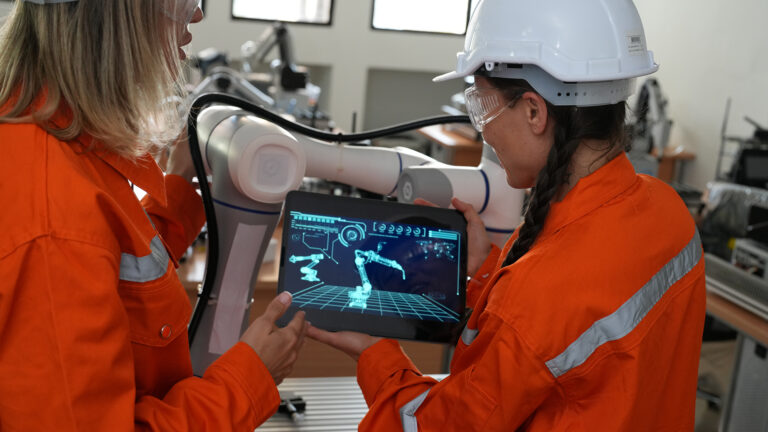Reliable, secure, high coverage, fast and ultra-low latency. These are the main characteristics of a private LTE (long term evolution) network: a wireless network that meets industrial connectivity needs. This multi-user technology helps to increase the efficiency of operations, while allowing them to be controlled remotely in real time.
In addition, it supports all mission-critical vertical applications (e.g., those that enable remote machine control in a mine). It provides reliable and predictable connectivity to automate operations, ensure safety and security, and take companies to new levels of quality and productivity.
How to protect and secure industrial operations?
Industries must respond nimbly to market changes and customer demands. This means transforming the way they do their work and optimizing their operations in real time.
Digital transformation and process automation are key to respond to the fast-paced way in which businesses move. LTE private networks are becoming a fundamental ally, enabling industries to be hyperconnected and guaranteeing the functioning of operations in real time.
Robots for industry and their potential with private networks

Industrial modernization includes, among other things, the incorporation of automated guided vehicles; these are robots that move autonomously (without a driver). In general, they are used to transport loads, especially for repetitive tasks and with high cadence. Their main benefit is that they guarantee the uninterrupted movement of materials, but to achieve this they require an optimal wireless connection.
This is where private LTE networks come in: they are ideal for processes like this, because they have low latency (i.e., decreased response time). This reduces failures and increases the efficiency of operations.
Let's look at an example. The Nokia plant in Oulu, Finland, manufactures and designs telecommunications products. To automate one of their processes, they incorporated an autonomous intelligent vehicle (AIV). This AIV was operating with a wifi network covering the area between two points, but this network soon became insufficient, as connectivity was lost along the way (and required manual intervention to re-establish, which made the operators' work difficult).
Thus, a private wireless network (4.9G/LTE) was implemented, ensuring secure and stable connectivity of all assets inside and outside the factory. In this way, the AIV can perform functions anywhere in the plant without interruption of the connection.
The contribution of private networks for mission-critical operations

When we talk about mission-critical systems, we refer to those that are considered essential for the operation of a process or business and whose failure or interruption will have a serious impact.
For industries with mission-critical operations, a private LTE network provides uninterrupted communication services. It is used in large enterprises around the world, from utilities and mining to manufacturing, airports and ports that require a network that keeps up with operations, because communication disruption would bring serious inconvenience.
Consider the following example: at an airport, communications between the control tower and a plane that is about to land cannot be cut off at any time, as this would jeopardize the process (and the lives of those traveling). In addition, this communication has demanding low latency requirements, i.e., the information to and from the control tower must arrive as close to real time as possible so that the decision making process is instantaneous.
Why is it a more suitable alternative to a wifi network?
Private networks use a dedicated spectrum space exclusively for their processes. For this reason, it is more efficient and secure than a Wi-Fi network, as it avoids the well-known problems of saturation and interference of free-use bands.
In addition, this type of connection guarantees control of operations, since it covers every corner of a terminal with mobile broadband that allows the flow of information between employees and machines, which is essential for real-time monitoring and rapid response in case something happens.
What can we do with private LTE networks for industry?
- Control machinery remotely or on site.
- Provide connectivity to security cameras for plant and operations surveillance.
- Collect environmental data from low power sensors.
- Control remote-controlled, autonomous and collaborative cranes, AGVs and forklifts.
- Calculate the trajectory of vehicles, machinery and personnel to optimize workflows.
- Use PTT (push-to-talk) communications applications, such as walkie-talkies.
- Protect data by storing and processing it in a completely private network.
- Locate assets with high accuracy, even when they are indoors and without GPS coverage.
- Study anomalies in the production line from real-time video analysis.



